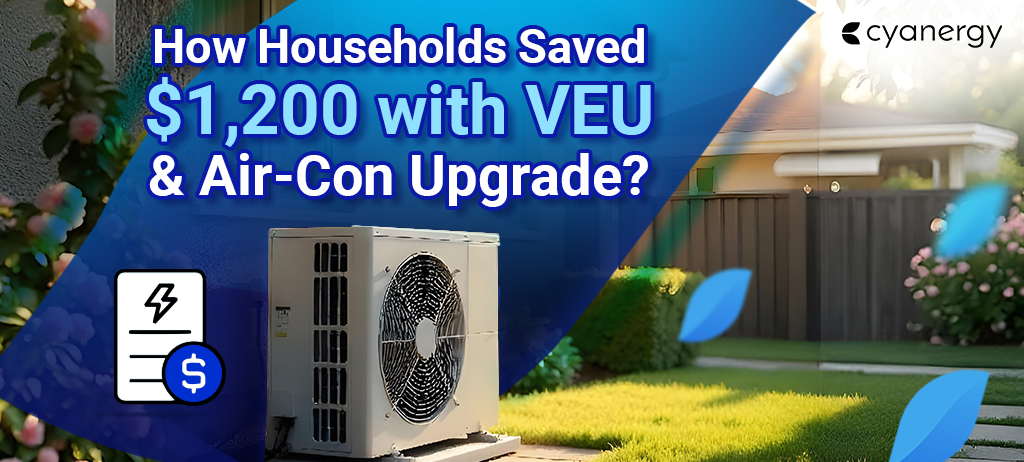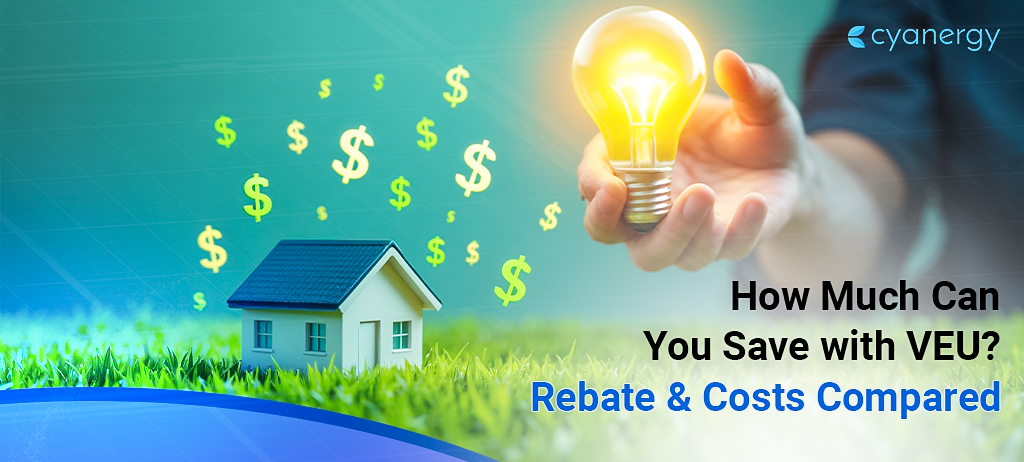As a homeowner, you are probably aware of the rising costs associated with household energy consumption. This is why cutting back on energy consumption can result in significant savings.
In addition to the financial benefits, using less electricity can help reduce your carbon footprint’s impact by making your home greener and more sustainable. Here are 7 ways to reduce energy consumption at home in Australia.
First, Manage Your Energy Usage
Before reducing your energy consumption, you must understand and manage your energy usage pattern.
Here are some easy steps to help you control how much energy you use and pick out actions that could save you money:
Compare How Much Energy You Use
Think about When You Use the Most Energy
Avoid Using Energy in Peak Hours
Find Out Energy Hot Spots Around your Home
- Heating and cooling
- Hot water
- Pools and spas
- Refrigerators and other appliances
Other things like standby power, lights, and cooking also use energy. Newer home energy sources include entertainment systems, computers, and outdoor lights.
To save the most energy and money:
- Start by fixing the most significant energy-wasting areas in your home.
- Look for easy and cheap changes that make a big difference.
- Make sure your equipment is installed and maintained correctly.
- Think about your habits and preferences that might affect your energy consumption.
- If you have an electric hot water system, consider getting a solar one or a heat pump.
When you get new things for your home, choose ones that use less energy. You can check the Energy Rating website to find the most efficient options. See if you can get rebates or help to upgrade your appliances.
Make the Switch, Compare Electricity and Gas Provider
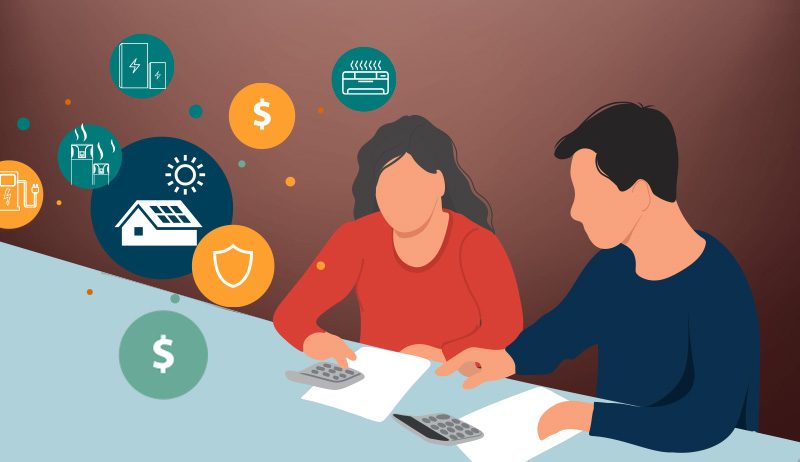
The right energy plan should match how much energy you use and when. If you pick the wrong plan, you might pay more.
Some plans give you rewards for using energy when it’s not busy, which could save you money.
In most places, you can decide who provides your electricity, except in some areas like Tasmania, the Northern Territory, Western Australia, and southeast Queensland. Even if you only have one choice, there are usually different plans.
You can use tools like Energy Made Easy to compare plans and see which is best for you. It’s a good idea to check your past bills to know how much energy you use.
But remember, these tools are just general tool guides. You should always consider your situation and any particular circumstances.
Be careful. Some comparison services get paid for getting people to switch providers.
You can ask for more frequent bills and pay smaller amounts more often to manage your bills better. Some companies offer discounts for paying on time but watch out for fees if you’re late.
If you have a problem with your energy provider, some services can help you. Make sure you know your rights as an energy customer.
10 Best Ways To Reduce Energy Consumption At Home
Choose Energy-Efficient Appliances
Don’t just focus on the price when purchasing new appliances like TVs, fridges, or washing machines. Remember, you’ll also be paying for the energy they use.
Consider the running costs as a second price tag. Avoid getting bigger or fancier models that might use more energy and cost you more in the long run.
Check the Energy Rating Label on appliances and choose the ones with more stars. You can use the Energy Rating Calculator or visit the Energy Rating website to compare how efficient different appliances are.
Gas heaters don’t have an Energy Rating Label, but some may have a rating from state and territory regulators. If there’s no rating, compare the energy use with similar products and look for energy-saving features.
Keep an eye out for the blue ENERGY STAR® mark, too, which shows that the product is energy-efficient.
Use Your Appliances Efficiently
- Position them well to make sure they work properly. For instance, keep fridges away from heat sources like ovens.
- Use and take care of them correctly. Let hot food cool before putting it in the fridge, and fix any leaks in the door seal.
- Follow the instructions when setting them up to avoid problems later.
- Adjust thermostat settings to save energy while keeping your home comfortable. Take time to learn how to use these settings properly.
- Use appliances as soon as possible and switch them off on the wall when you’re not using them.
Choose Solar Panels and Solar Batteries
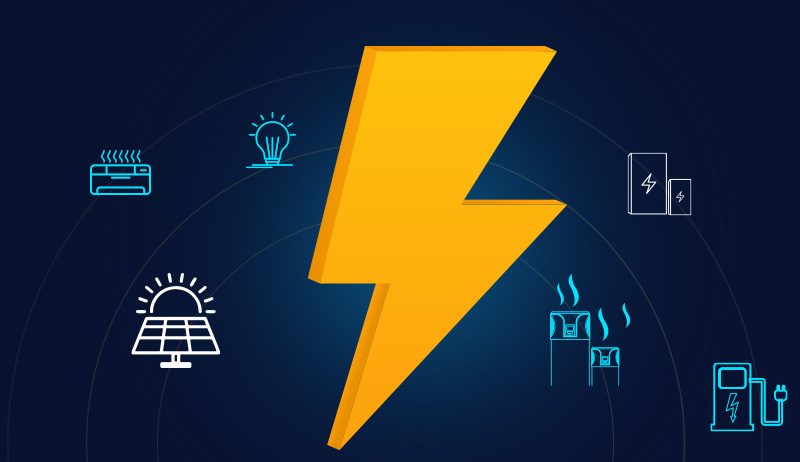
Consider using solar panels and solar energy storage to power your home. This system can help you become more self-sufficient with energy and avoid using fossil fuels.
Solar panels produce electricity daily for free once you’ve paid for them. Adding batteries lets you store extra power for when you need it.
To see how much you could save, check your electricity bills to estimate how much energy your household uses each year.
A typical solar panel setup costs around $3500; you can pay it off in 3 to 5 years. Adding batteries will make the payback period longer.
Solar Rebates
Feed-in tariffs are what energy companies pay you for any extra electricity you send back to the grid. These rates can vary between companies and regions, so check them carefully.
When choosing an energy plan, try to balance low usage charges, supply charges, and a fair feed-in tariff.
Switch Off Lights and Appliances
To save energy, turn off lights and electrical devices when you’re not using them. Instead of leaving appliances on standby, switch off the power at the wall. Turn off your heater, air conditioner, and other devices when you’re not using them.
Switch off your computer, printer, and Wi-Fi router at night or when you’re not at home. Many computers have settings that automatically turn them off when not used for a while.
Control Heating And Cooling
- Every degree over 20 can increase your heating bill by 10%. In winter, heating can make up more than 30% of your bill. Get the heat pump rebate, Victoria, by purchasing our heat pump.
- During winter, set your thermostat between 18 and 20 degrees. In summer, keep it at 26 degrees or higher.
- Some systems let you turn off heating or cooling in rooms you’re not using.
- Save money by using more energy-efficient heating. For example, switching from a fan heater to a split system can save about $700 a year. You might also get rebates for installing efficient heating through programs like the Victorian Energy Upgrades.
- If you have gas heating and a modern air conditioner that can also heat, try using the air conditioner for heating in winter.
Switch to Energy-saving LED Light Bulbs
Turn Down the Thermostat
Lower the temperature settings on your heaters, air conditioners, and hot-water system by two to three degrees.
Instead of leaving heaters on all night, warm your bed with a hot water bottle or an electric blanket for a few minutes before bedtime.
This, along with your body heat, flannel sheets, and a thick blanket, will keep you cozy even if the room feels cold.
Use Cold Water on Your Washing Machine
When doing laundry, use cold water and choose quick cycles on your washing machine. This will help reduce your home’s energy bill.
Consider getting a front-loading washing machine, which uses up to 50% less energy than top-loading ones. Also, look for models with a high energy star rating.
Saving Energy in the Kitchen is Important
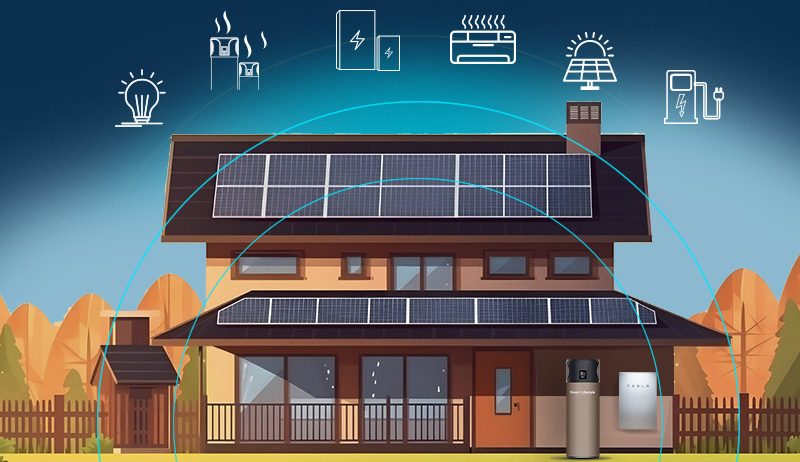
Refrigerator:
Your fridge works constantly and is one of the appliances that uses the most energy. Keep your freezer at 4 or 5 degrees Celsius and -15 to -18 degrees Celsius.
Ensure the seal on your fridge door is tight and has no gaps where cold air can escape. If you have an extra fridge or freezer, turn it on when needed.
Cooking:
To reduce cooking time in the evening, move frozen food from the freezer to the fridge in the morning so it can thaw out.
When you’re cooking, use the microwave when you can. Microwaves use less energy than electric ovens.
If you’re using a stove, keep lids on pots to make cooking faster. Plan to cook more so you have leftovers for the next day or week. Store leftovers in the freezer.
Dishwasher:
Use the economy cycle on your dishwasher and only run it when it’s complete.
Practice Energy-efficient Habits
Simple changes to your daily routine can result in significant energy savings. These habits may include turning off lights when not in use, taking shorter showers, washing clothes in cold water, using rain and greywater for garden irrigation, etc.
Reducing household energy consumption saves money and helps the environment. Following these tips, you can create an energy-efficient home and contribute to a greener, more sustainable future.


